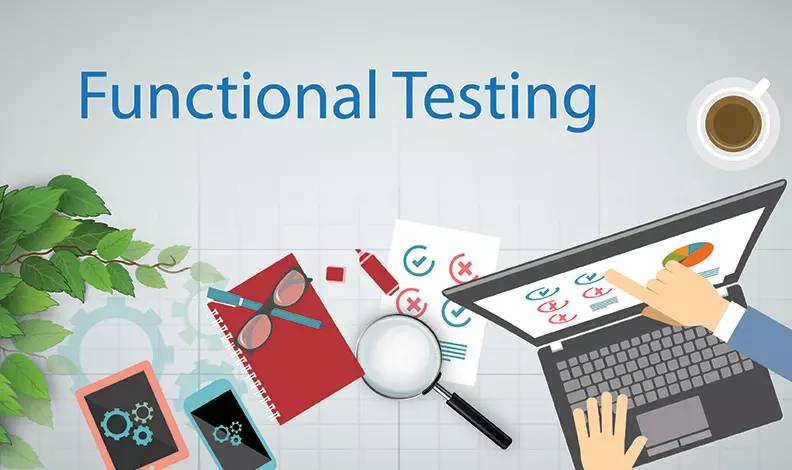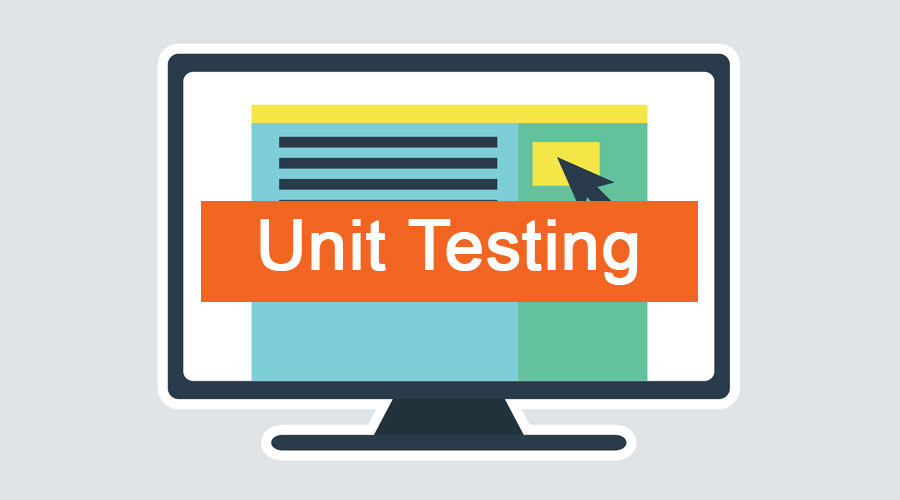Functional Testing vs Unit Testing: Boosting Software Quality
- David Ho
- 0 Comments
In the ever-evolving world of software development, ensuring quality is paramount. Two critical testing methodologies, functional testing vs unit testing, play significant roles in achieving this goal. While they aim to identify and address defects, their approach, scope, and focus differ. This article aims to comprehensively understand both methodologies, comparing and contrasting them to shed light on their strengths and how they work together to deliver high-quality software.
I. Understanding Functional Testing vs Unit Testing
1. Functional Testing
Functional testing ensures that a software system or application performs as expected and meets the project’s requirements. It involves testing the software’s functionality by feeding it input and inspecting the output to ensure the application operates as predicted. In the systematic journey of providing software functionality, several vital steps guide the execution process:
- Requirement Analysis: Understand and identify key features in software functional requirements for testing.
- Test Planning: Develop a complete test plan outlining objectives, scope, and allocating roles.
- Test Case Design: Create detailed test cases ensuring comprehensive coverage of functional aspects.
- Test Execution: Execute test cases on the software, recording and documenting results.
- Defect Tracking and Reporting: Log and prioritize defects, providing detailed reports to the development team.
- Regression Testing: Perform regression testing to validate changes and ensure existing functionalities remain unaffected.
Specialized tools, such as Selenium for UI, Postman for APIs, JMeter for performance, OWASP ZAP for security, and TestRail for management, enhance efficiency, ensuring a systematic and practical process, contributing significantly to software quality and reliability.

Explore the key features of functional testing:
- User Interface (UI) Testing: Validate the correctness and consistency of user interface elements.
- API Testing: Verify proper communication between software systems.
- Database Testing: Examine data integrity and accuracy.
- Security Testing: Ensure protection against unauthorized access and security threats.
- Performance Testing: Evaluate system performance under various conditions.
- Usability Testing: Assess user-friendliness and overall user experience.
Following best practices and being aware of related issues is necessary to guarantee the efficacy of functional testing. A robust testing process starts with well-defined test objectives and scope. Your business must also achieve a balance between automated and manual testing techniques for thorough coverage. Maintaining the relevance and accuracy of test cases requires regular updates based on changes in requirements.
However, there might be difficulties, such as the intricacy of test case design, especially when thorough functional testing is involved. In addition, the lengthy nature of this process presents a significant obstacle that testers must overcome to guarantee comprehensive and efficient testing, mainly when working with extensive applications.
2. Unit Testing
Unit testing is a software testing technique focusing on an application’s most minor testable parts, units. These units can be individual functions, classes, modules, or any other code that can be isolated and tested independently. The primary goal of this testing approach is to ensure that each software team works as intended. The process of it goes as follows:
- Test Planning: Develop a plan outlining the scope, objectives, and resources for unit testing.
- Test Case Design: Create detailed test cases for individual units, covering various scenarios and edge cases.
- Test Execution: Execute unit tests on isolated components, assessing their functionality and behavior.
- Results Analysis: Analyze test results to identify discrepancies and potential issues within the tested units.
- Debugging: Address and debug issues found during testing, ensuring the correct functioning of each unit.
- Documentation: Document test cases, results, and any modifications made during testing.
Various tools contribute to the comprehensive toolkit for efficient unit testing. They include Java, .NET, and Python for writing and executing, Mockito in Java for creating mock objects, and Code Coverage Tools such as JaCoCo and Cobertura for measurement.

There are some key features of unit testing:
- Isolation: Isolate and test individual code units, ensuring they function correctly before being integrated into the more extensive system.
- Automation: Typically automated to run quickly and efficiently, allowing for frequent testing and rapid feedback cycles.
- Code Coverage: Measure the percentage of code covered by tests, providing a quantitative measure of testing thoroughness.
- Fast Feedback: Provide immediate feedback on the correctness of the code, helping developers identify and fix bugs quickly.
- Regression Prevention: Prevent regressions caused by changes in the code, ensuring existing functionality remains intact.
- Documentation: Serve as living documentation of the code’s behavior, clarifying its purpose and expected functionality.
Automated testing is paramount to enhance efficiency in the testing process. By testing each unit in isolation, developers ensure a meticulous examination of individual components. The integration of continuous integration practices facilitates the automatic execution of tests with every code change, fostering a dynamic and responsive testing environment.
However, challenges persist. The limited scope of unit testing may overlook integration issues that surface only when components interact. Additionally, with automation, the testing process can become more efficient, potentially hindering the agility and pace of software development. Striking a balance between these practices and addressing associated challenges is essential for a comprehensive and streamlined testing strategy.
II. Difference between Functional Testing and Unit Testing
| Aspect | Functional Testing | Unit Testing |
|---|---|---|
| Automation level | Partially automated but often involves manual testing | Highly automated for fast feedback and frequent testing |
| Benefits | Ensures software meets user needs and expectations, improves user experience, identifies security vulnerabilities | Improves code quality, reduces bugs, facilitates refactoring, provides early feedback |
| Execution timing | Performed later in the development process, after integration and system testing | Performed during and after the development of individual units |
| Focus | User experience, business requirements, overall system behavior | Code correctness, logic, and individual unit behavior |
| Scope of testing | The entire software application or system | Individual units of code (functions, modules, classes) |
| Test cases | Based on user stories, business requirements, and system specifications | Based on code logic, error paths, and boundary conditions |
| Test environment | Production-like environment or test environment with mock dependencies | Controlled test environment with mocked dependencies |
| Test results and feedback | High-level overview of system functionality | Detailed information about specific code behavior |
| Testing approach | Black-box testing: focuses on input/output and user perspective | White-box testing: examines internal code structure and logic |
| Types | System testing, integration testing, acceptance testing | White-box unit testing, black-box unit testing, boundary testing, positive testing, negative testing |
Make sure your software quality is at its best with TECHVIFY:
Learn More On:
III. How Does Unit Testing and Functional Testing Boost Software Quality?
Unit testing vs functional testing plays a crucial role in boosting software quality by addressing different aspects of the development process. Here’s how each contributes.
1. Functional Testing
- User-Centric Validation: Functional testing is pivotal in verifying that the software aligns with user needs and business specifications, ensuring it delivers the expected value.
- Enhanced Usability: With this testing, scrutinizing the user interface can detect and resolve usability issues, creating a more intuitive and enjoyable user experience.
- Reliability and Performance Optimization: This testing technique goes beyond functionality to pinpoint and address performance bottlenecks, bolstering the software’s reliability and optimizing its performance.
- Mitigating Security Risks: With the ability to uncover potential security vulnerabilities, functional testing acts as a robust defense mechanism, thwarting data breaches and unauthorized access.
- Deployment Confidence: Through comprehensive testing, stakeholders gain confidence in the software’s readiness for deployment, ensuring seamless functionality in real-world scenarios.
- Streamlined Collaboration: It is a collaborative tool that aligns developers, testers, and stakeholders with expected software behavior and fosters effective communication and teamwork.

2. Unit Testing
- Early Detection of Bugs: Unit tests, which test individual units separately, find bugs early in development and stop them from growing into more significant problems later.
- Improved Code Quality: This testing encourages developers to write clean, well-structured code that is easier for devs to understand, maintain, and modify.
- Enhanced Code Coverage: These techniques measure the percentage of code exercised by tests, indicating areas that require additional testing and offering a quantitative measure of testing thoroughness.
- Faster Feedback Loop: Automated unit tests offer instant feedback on code modifications, enabling developers to detect and address any regressions or unexpected outcomes promptly.
- Refactoring Confidence: When refactoring code, unit tests act as a safety net to ensure that modified functionality doesn’t affect existing functionality.
- Reduced Development Costs: By catching bugs early and preventing regressions, this testing method can significantly reduce the time and cost required for fixing bugs later in the development cycle.
Conclusion
Functional testing vs unit testing are essential pillars of software development, each fulfilling distinct roles. While functional testing ensures the software’s overall functionality aligns with user requirements, unit testing delves into the individual components and their behavior.
Developers can elevate software quality, reliability, and performance by grasping the difference between unit testing and functional testing and leveraging both approaches effectively. This approach paves the way for a more positive user experience and a successful product launch.
Ready to propel your software quality to stellar heights? Enroll in TECHVIFY‘s comprehensive unit tests vs functional tests service today! Learn from industry veterans, empowering you to master both testing techniques.
Visit our website or contact us today and embark on your journey towards software excellence!
TECHVIFY – Global AI & Software Solution Company
From Startups to Industry Leaders: TECHVIFY prioritizes results, not just deliverables. Accelerate your time to market and see ROI early with high-performing teams, AI (including GenAI) Software Solutions, and ODC (Offshore Development Center) services.
- Email: contact@techvify.com.vn
- Phone: (+84)24.77762.666





